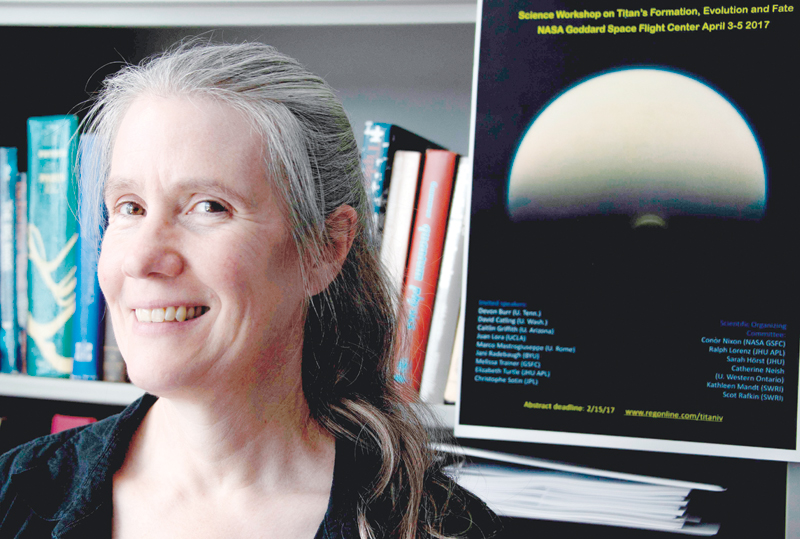

LAUREL, United States: Elizabeth Tuttle was overjoyed when, on June 26, she received a call from Nasa: her project to send a drone copter to Titan, Saturn’s largest moon, was given the green light and a budget of nearly a billion dollars.
But the launch of “Dragonfly” won’t happen until 2026 — surely a frustrating detail, given she has been working on the project for 15 years.

“It’s not going to feel like a long time, it’s gonna go very quickly,” says “Zibi” Turtle, 52, a planetologist at the Johns Hopkins Applied Physics Laboratory, a massive research centre outside Washington that employs 7,000 people.
The 1,323-pound drone won’t land on Titan — about 1.6 billion kilometres from Earth until 2034.
“The outer solar system is a distant place,” Turtle explains calmly. She seems surprised she’s actually being asked about the length of interplanetary voyages.
“It definitely takes a certain amount of patience to explore the outer solar system.”
The pace of planetology is nothing like that of most other scientific disciplines. The distances are so far, and the robots we send to cross them so sophisticated, that researchers will dedicate their lives to a mere handful of missions.
Educated at MIT and the University of Arizona, Zibi Turtle remembers the first cursory images of Titan, taken by the Hubble space telescope in the 1990s. The researcher was among the first people to receive close-up photos of Titan taken in 2004 by the Cassini probe — which had been launched seven years prior.
“That was fascinating, to see clouds on another planet,” Turtle recalls. “And we had no idea what was on the surface. We could just see dark and bright areas.”
The European Huygens probe, dropped to the surface by Cassini, managed to send its images before dying. The world stared, stupefied, at riverbeds crossing Titan’s surface. “That was a real breakthrough,” Turtle adds. — AFP
Oman Observer is now on the WhatsApp channel. Click here



